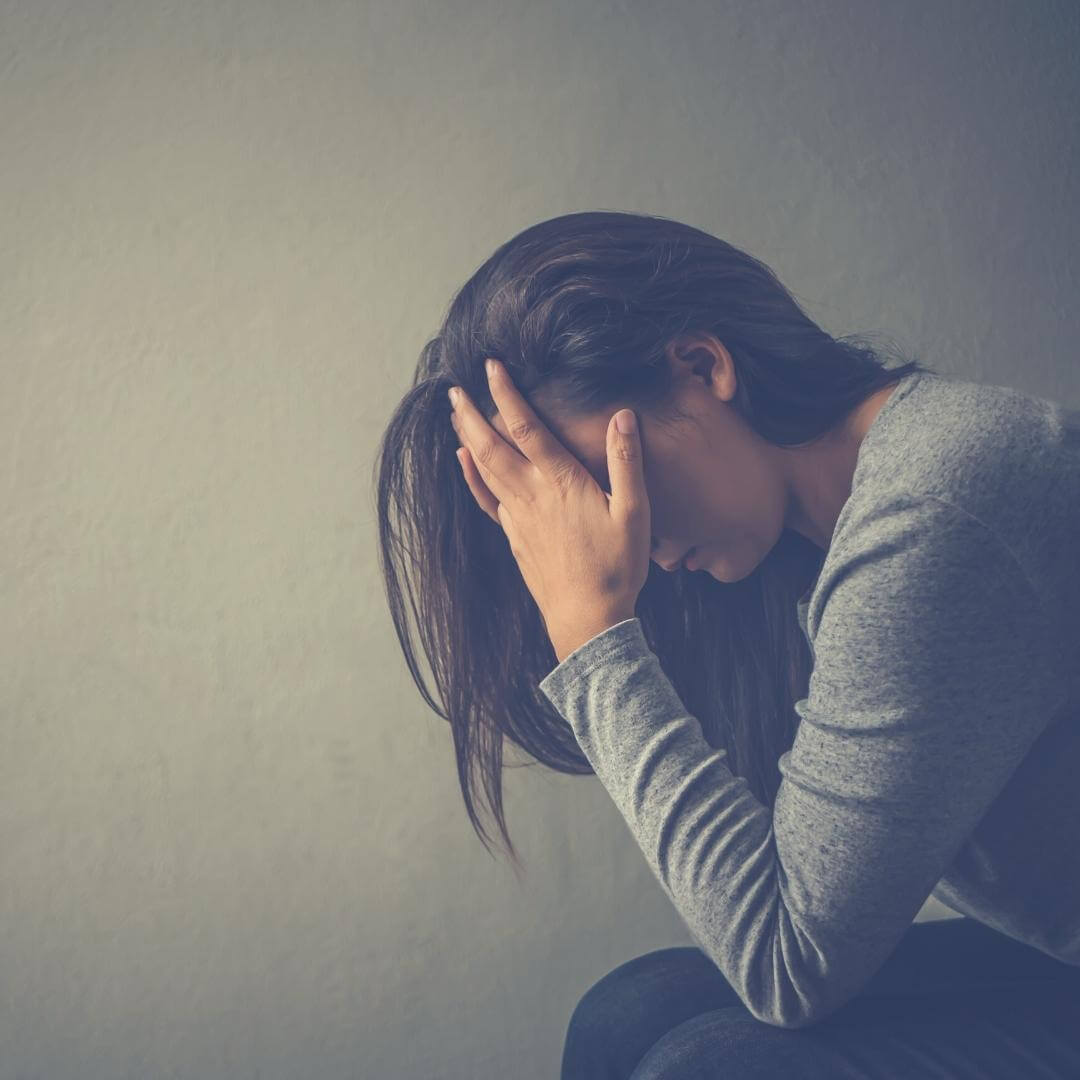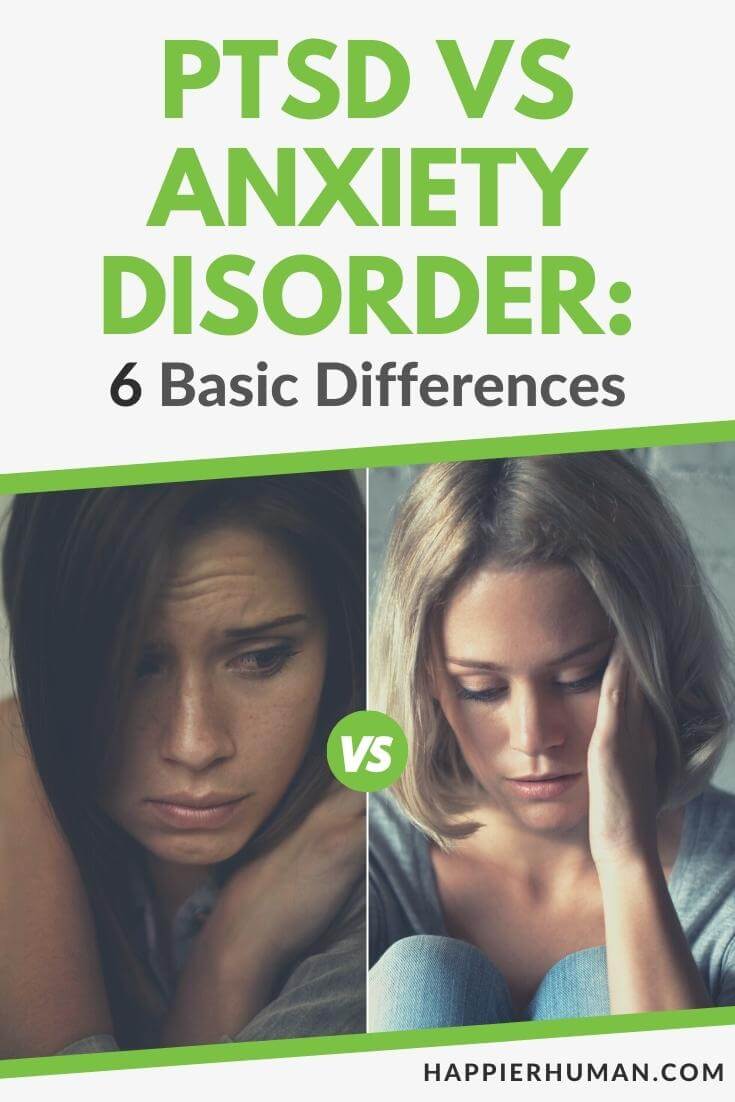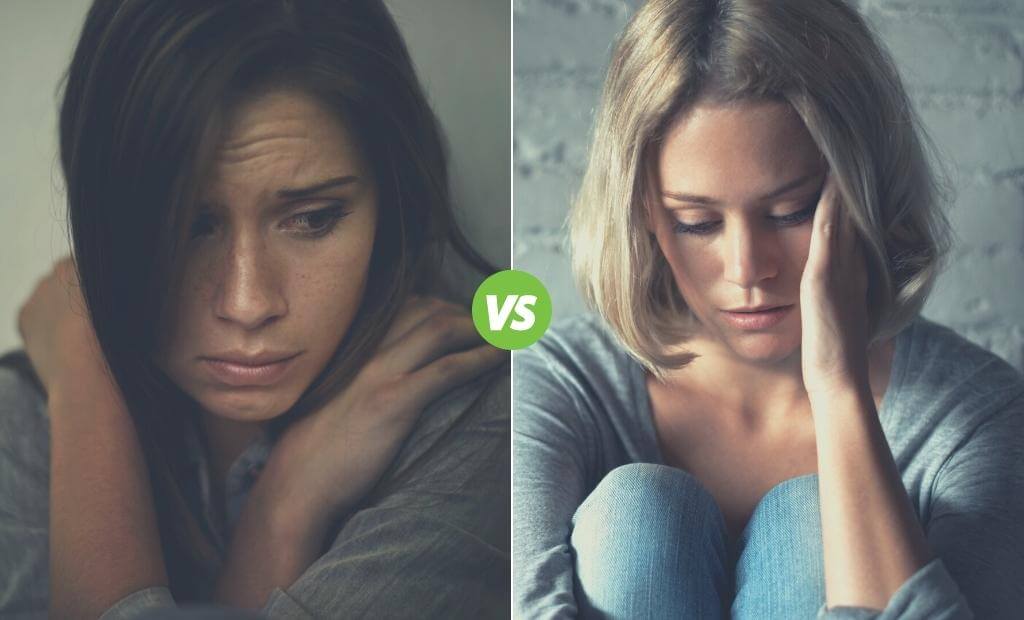Many of us face normal fears and worries on a day-to-day basis. But when your worries interfere with your everyday life, it could be something more than just normal stress. Furthermore, if you’ve lived through a traumatic event and find yourself struggling to cope, you might be suffering from post-traumatic stress disorder, or PTSD.
PTSD and anxiety are both common mental health issues. But what is the difference between PTSD vs. anxiety? And what can you do if you have symptoms of one or the other?
In this article, we’ll delve into both of these disorders and talk about ways to help you find more peace in your life.
What Is PTSD?
Post-traumatic stress disorder, or PTSD, is a mental health disorder that comes on after going through a traumatic event. For instance, PTSD could come from being in active combat, experiencing sexual assault, childhood abuse, a terrible accident, or a physical attack.
Any number of traumatic occurrences could cause PTSD. Even witnessing a loved one go through a life-threatening medical scare, or living through one yourself, could give you PTSD. Natural disasters like fires and floods, hurricanes, or earthquakes can also negatively impact your psyche.
Whatever the cause, PTSD impacts your thinking and mood, making it difficult to get through normal activities. It can affect your social interactions, your job, relationships, quality of life, and even your physical health.
People with PTSD often have recurring and distressing memories of their traumatic events. These intrusive thoughts can cause emotional and mental stress.

They might come in the form of nightmares or flashbacks and make you feel like you’re right back in the trauma, reliving it. Flashbacks can also be triggered by things that remind you of the trauma, even if they’re unrelated.
PTSD can also cause feelings of hopelessness, detachment, emotional numbness, and trouble concentrating or remembering things. If you have PTSD, you may constantly have your guard up and avoid situations that trigger memories of your trauma. Additionally, you might experience intense emotions of shame, guilt, and fear.
PTSD manifests differently for everyone. Regardless of what it looks like, PTSD symptoms often worsen when you’re under a lot of stress. PTSD usually starts within a month after the trauma occurs, but it can also take months or years to kick in.
What Is Anxiety Disorder?
If you have an anxiety disorder, you may experience intense fear and worry that you can’t shake off. If not treated, it may gradually worsen as time goes on. The anxiety may be a nonspecific feeling of dread or unrest, or it can be related to a specific situation or object.
There are several common types of anxiety disorders:
All of these types of anxiety can greatly disrupt your mental health and even your physical health, making it harder to navigate life and relationships. For many people, anxiety can be worse at night when they’re alone with their thoughts. It’s hard to feel happy and healthy when you’re feeling chronically anxious and worried.
Six Key Differences between PTSD vs. Anxiety Disorder
Although there are similarities between PTSD and anxiety, they are two different disorders. However, they share many similar symptoms, making it difficult to tell them apart. For example, both PTSD and anxiety can cause restlessness, irritability, and sleeping problems.
Here are a few distinctions that set them apart from each other:
1. People with PTSD have undergone an intense or long-lasting trauma.
On the other hand, anxiety isn’t necessarily related to a specific trauma. People with generalized anxiety may feel anxiety around multiple issues or just have an overall sense of unease.
Their symptoms are often constant, whereas PTSD symptoms are often triggered by stress or things that remind the person of their traumatic event.
2. PTSD symptoms typically involve triggers.
Certain events can trigger PTSD flashbacks. For instance, the sound of fireworks might bring up memories of combat, or a dark room may evoke fear after a home robbery. On the other hand, panic disorder can occur with or without a trigger.

A person with panic disorder can have an attack at any time, whereas those with PTSD are more likely to have symptoms alongside a specific stress or trigger.
3. Phobias cause an irrational fear of an object or situation with Anxiety.
People with phobia disorders are intensely afraid of a specific thing, which may interfere with their day-to-day life.
The object of fear is typically not truly dangerous or something most people are afraid of. On the other hand, people with PTSD have symptoms related to a traumatic event rather than an object.
4. People with PTSD can be easily startled.
PTSD can make a person become frightened easily. Loud noises, dark rooms, or even hearing about similar events on the news can trigger PTSD symptoms.
Anything reminiscent of the event can cause startling, panic, or flashbacks. On the other hand, generalized anxiety disorder is constant and long-lasting.
5. OCD is common with Anxiety, resulting in repetitive behaviors.
A hallmark of OCD are repetitive behaviors a person feels compelled to repeat to soothe their anxiety. Examples may be repeated handwashing or vocalizing a certain sound over and over.
The ritual often overtakes the person’s life, and they may keep performing the action even to the detriment of other everyday activities. This is very different from the roots and symptoms of PTSD.
6. Onset of PTSD is typically after a traumatic event.
PTSD often begins within one month of a trauma, although it can take years to show up. But anxiety disorders can present at any time in a person’s life.
There are many key differences between PTSD vs anxiety disorders. However, PTSD can contribute to developing generalized anxiety disorder. Over time, the heightened stress and emotions of living with PTSD can play a role in developing anxiety, depression, or alcohol and substance abuse as a coping mechanism.
Treatment Options for PTSD
If you’re struggling to cope after a traumatic event, it’s important to seek help. You can talk to a trusted friend or family member or reach out to your doctor about what you’re going through. Therapy is one way to help you process what happened, learn how to deal with guilt and shame, and practice healthy coping mechanisms.
Taking small actions to get grounded can help you deal with PTSD in your daily life. Things like walking barefoot on grass, listening to your favorite songs, petting an animal, and deep breathing exercises can help you stay present and soothe anxiety.

Some people find it helpful to enlist a service dog for PTSD. The dog can provide companionship to help you feel safe or be trained to perform helpful actions like turning on a light in a dark room before you enter a room.
A doctor may also prescribe medications to keep your brain chemistry in balance, easing symptoms of anxiety, PTSD, and depression.
Treatment Options for Anxiety
Those with anxiety can benefit from many of the same treatments. Therapy, mindfulness, grounding techniques, or medication can all help.
You might also try the 3-3-3 rule to calm anxiety, which involves using your senses to distract you from anxiety triggers. You simply need to name three things you can see, three you can hear, and move three parts of your body.
A service dog or emotional support dog can also provide comfort when you’re in the middle of a crisis.
Final Thoughts on PTSD and Anxiety Disorder
If you’re suffering from any form of PTSD or anxiety disorder, you don’t have to walk the path alone. And even if you’re struggling to cope, it is possible to find peace and happiness after trauma.
What you’re going through isn’t your fault. You deserve health, joy, and quality of life. Living with a mental health disorder of any kind does not define you. With the aid of therapy and other modalities, you can start to move forward towards healing.


